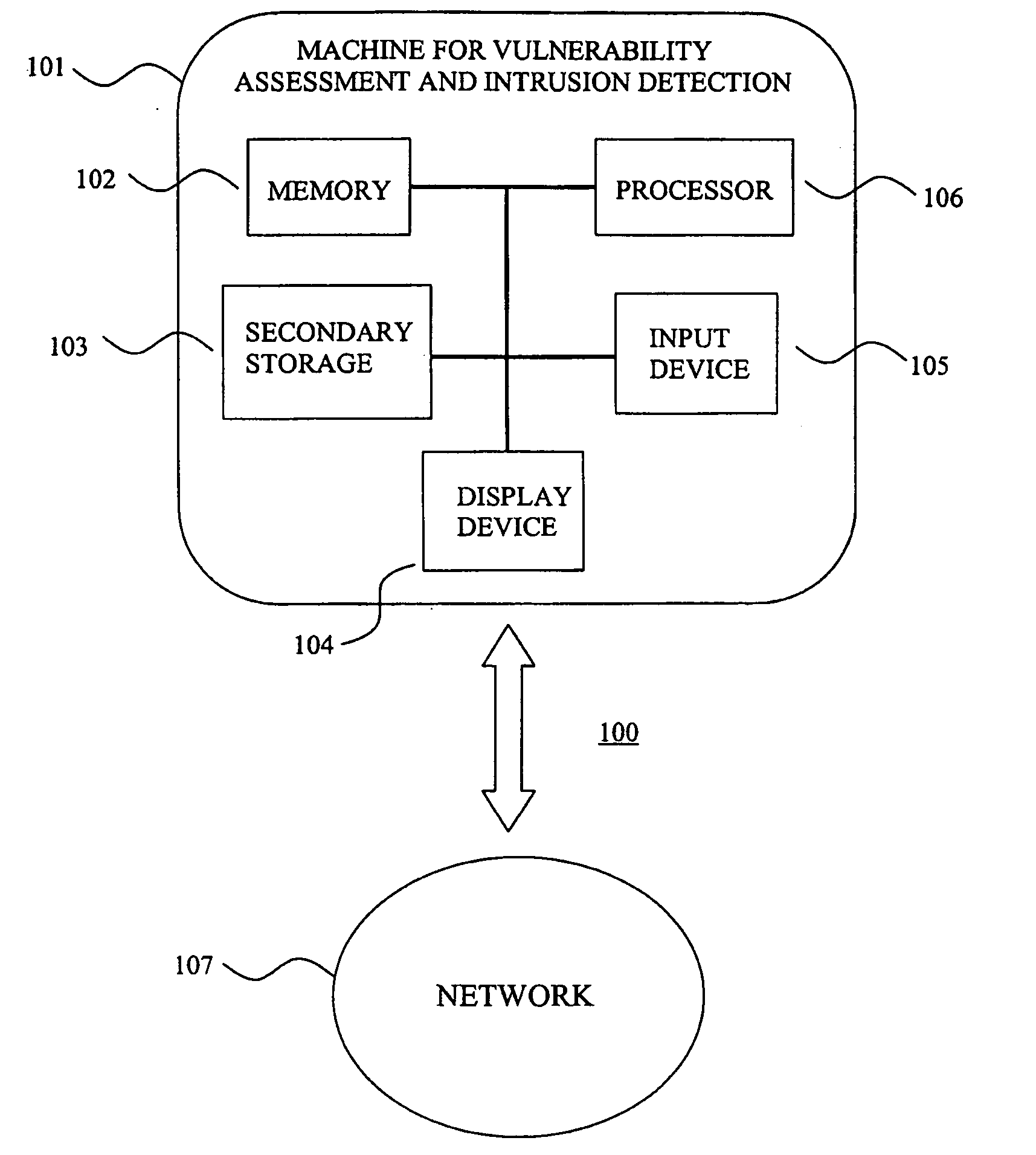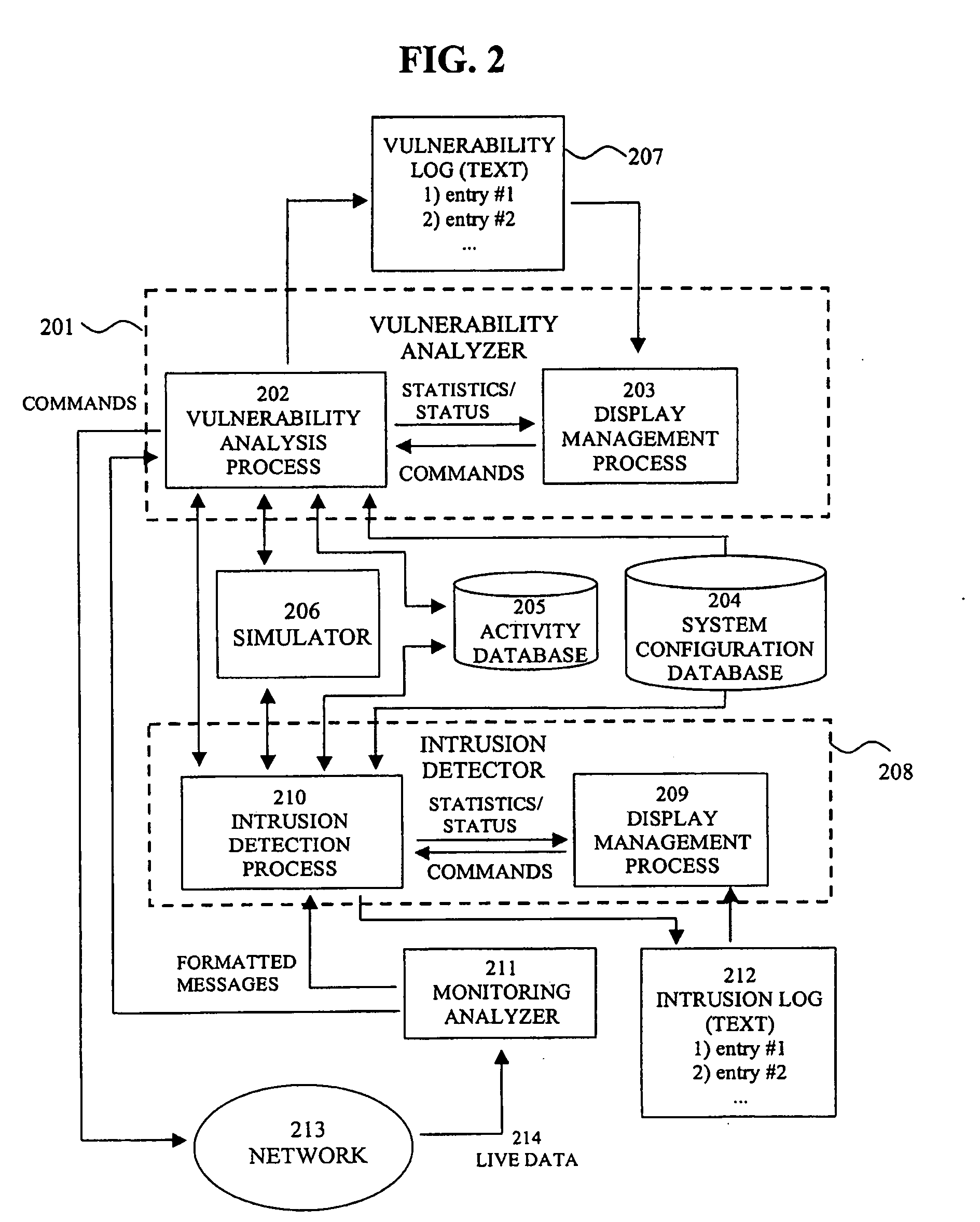In such cases, the
local area network may be vulnerable to attacks by unauthorized users, who may be able to
gain unauthorized access to files stored on computers on the
local area network over a communication port of the computer communicating outside of the local
area network.
Vulnerability assessment systems can be highly complex because the vulnerabilities associated with any given network can depend upon a version and configuration of the network, as well as upon the respective devices and subsystems coupled to the network.
Additionally, networks can have vulnerabilities that arise from a single aspect of the
system, and / or vulnerabilities that arise as a result of the interaction of multiple aspects of the
system.
Unfortunately, these tools are difficult to maintain and keep current due to rapidly evolving threats and changing technology environments.
Unfortunately, using multiple tools from a variety of vendors for a single
computer network analysis is labor-intensive.
Another difficulty that stems from
vulnerability assessment tools is the highly dynamic nature of a network environment.
Current conventional systems that attempt to assess the vulnerability of computer systems are believed to be deficient for a variety of other reasons.
Unfortunately, COPS does not maintain information across an entire network and predicts vulnerabilities only on a single host.
However, several disadvantages are associated with these products.
In one example, data collection and analysis are implemented as a
single process, which creates a prohibitively time-consuming process.
Furthermore, SATAN AND ISS are essentially static applications, in that they do no learn over time as data collection and analysis occurs.
The process involves generating extremely large amounts of data by
network monitoring utilities, and identifying illegal or otherwise unlawful activities that may be identifiable only by a few anomalous data packets.
Unfortunately, the speed with which attacks are currently executed rarely allows time for any meaningful response from the operator, leaving a network vulnerable to an intrusion.
However, the assumption that computer misuses appear statistically anomalous has been proven unreliable.
Anomaly detection techniques do not directly detect misuse, and, accordingly, do not always detect many actual misuses.
This occurs for a variety of reasons and, unfortunately, reduces the accuracy and usefulness of
anomaly detection systems.
In general, therefore,
anomaly detection techniques cannot detect particular instances of misuse unless the specific behaviors associated with those instances satisfy statistical tests (e.g., regarding
network data traffic or computer system activity) without security relevance.
Accordingly, a
threat of false alarms often causes system managers to
resist using
anomaly detection methods due to an increase in the
processing system
workload and the need for expert oversight, and without providing substantial benefits.
Another limitation associated with anomaly detection techniques is that user activities are often too varied for a single
scenario, resulting in many inferred security events and associated false alarms.
Furthermore, scenarios that anomaly detection techniques use may themselves be vulnerable to conscious manipulation by users.
Furthermore, statistical techniques that anomaly detection systems use often require complicated mathematical calculations and, therefore, are usually computationally intensive.
Since the underlying model is anomaly detection, rule-based systems have similar drawbacks as other anomaly detection techniques.
It is believed by the inventor that rule-based systems are not fully satisfactory, since only those intrusions that correspond to previously been stored
attack-scenarios are detected.
Importantly, intrusion detection methods in use today are plagued by false positive events, as well as by an inability to detect the early stages of a
network attack.
This is partly because conventional intrusion detection techniques are based on specialized equipment that is located at a customer's premise, and, accordingly may not determine a
hacker's activities over a broader scale.
This is believed by the inventor to be not helpful to prevent a system from becoming compromised and / or damaged.
Other shortfalls of existing intrusion detection systems include failing to utilize useful sources of data, producing large amounts of information that are difficult for a human to analyze in a timely fashion, being overly complex and difficult to use, and being designed to assist with system administration rather than
attack diagnosis.
Thus, as described above, automatic
vulnerability assessment systems and intrusion detection systems are time-consuming and complex.
However, installing patches on a
machine does not guarantee that a specific
machine is invulnerable.
Merely installing patches lacks the ability to discover weaknesses in a specific
machine's or network's configuration.
In contrast, human
vulnerability assessment experts can tailor their investigations to a specific configuration, but automatic assessments cannot.
Furthermore, known vulnerability assessment and intrusion detection problems require human-level intelligence to solve.
Although
expert system and
machine learning approaches in intrusion detection have been attempted with some success and a variety of approaches have been tried, no comprehensive effort has been made in the prior art to use human-level reasoning and learning capabilities in order to construct intelligent vulnerability assessment or intrusion detection systems.
 Login to View More
Login to View More  Login to View More
Login to View More 


